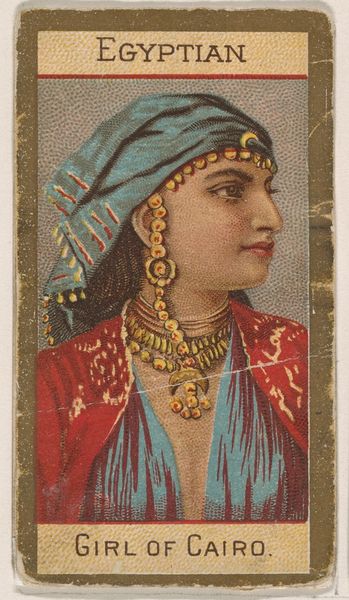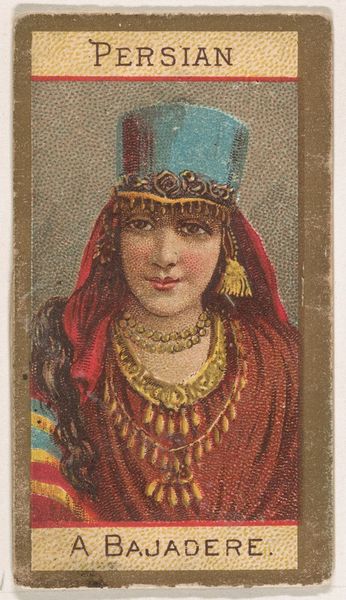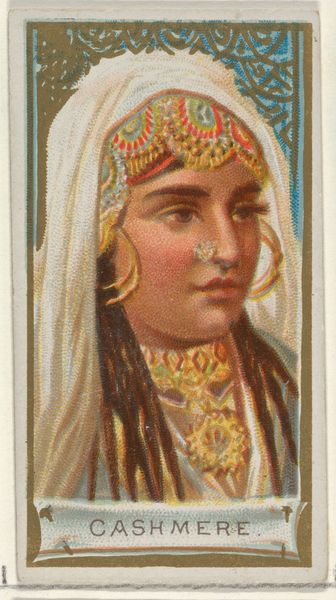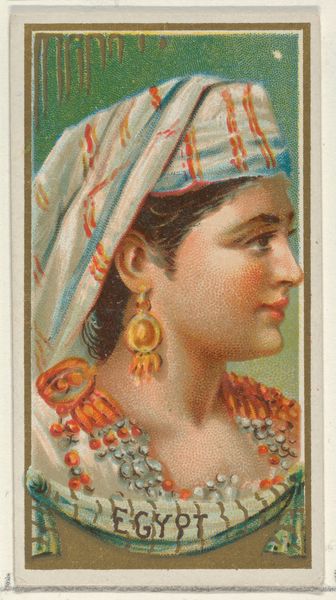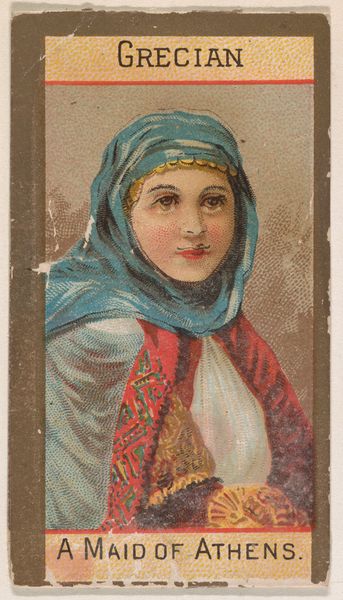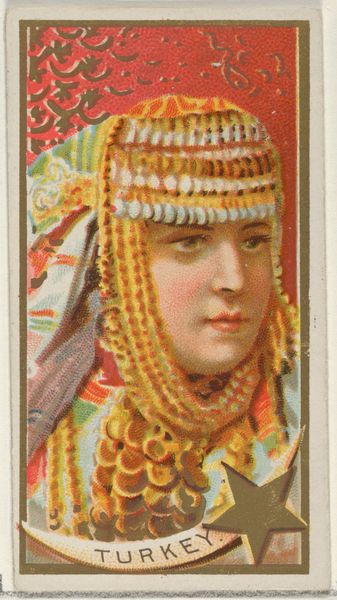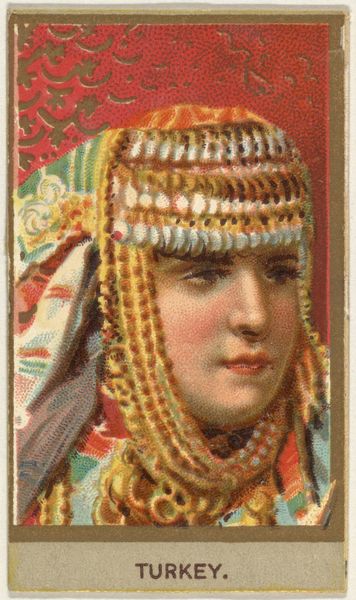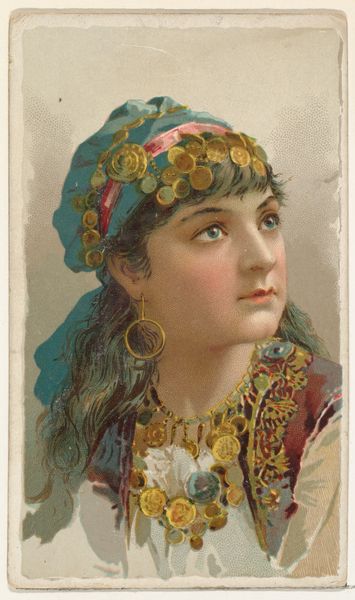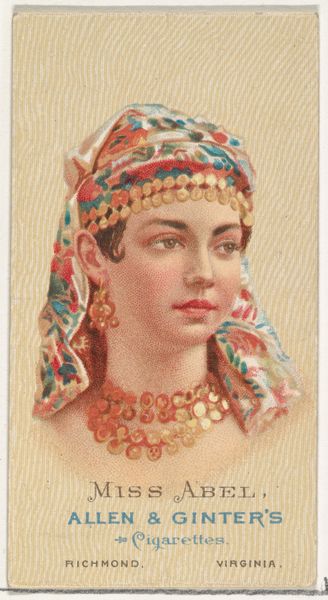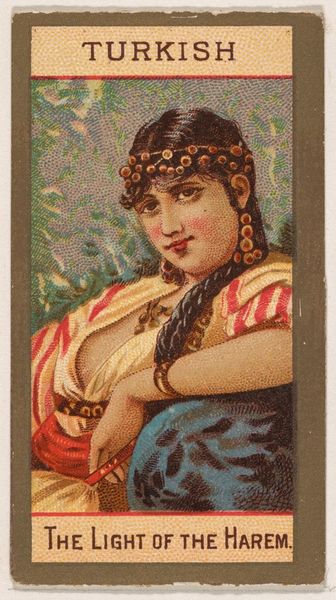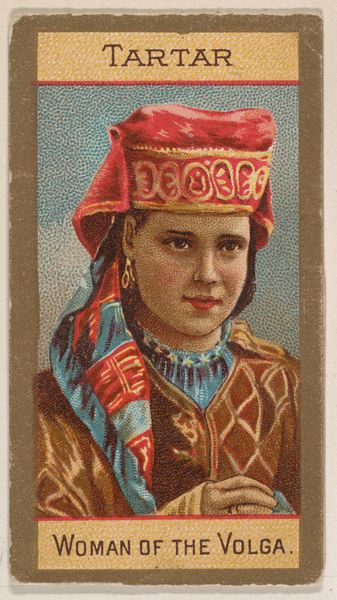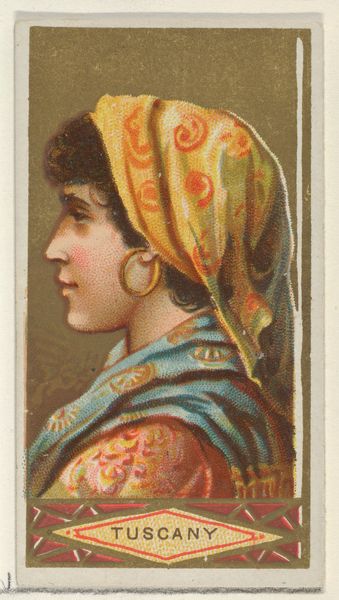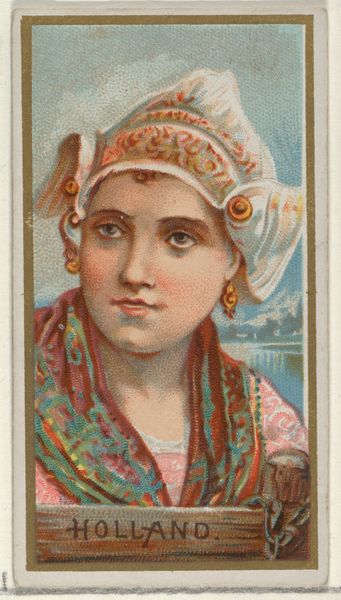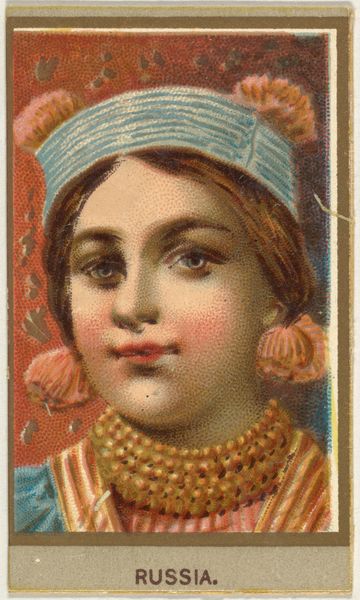
Moorish, Woman of Tangier, from Types of Nationalities (N240) issued by Kinney Bros. 1890
0:00
0:00
drawing, coloured-pencil, print, paper
#
portrait
#
drawing
#
aged paper
#
toned paper
#
coloured-pencil
# print
#
paper
#
coloured pencil
#
orientalism
#
watercolour illustration
#
history-painting
#
academic-art
Dimensions: Sheet (Folded): 2 11/16 × 1 7/16 in. (6.8 × 3.7 cm) Sheet (Unfolded): 6 7/8 × 1 7/16 in. (17.4 × 3.7 cm)
Copyright: Public Domain
Editor: Here we have "Moorish, Woman of Tangier" from 1890, made by the Kinney Brothers Tobacco Company. It’s a colour print, quite small. It strikes me as an idealised version of North African beauty... How do you interpret this work? Curator: This piece falls squarely within the realm of Orientalism, a 19th-century Western artistic and intellectual movement that constructed a romanticized and often distorted vision of the "Orient." Consider how this image might have been used. Editor: I suppose it was aimed at selling a certain idea, but also products. The artist clearly focused on decorative details – the jewellery, the patterned fabric. Is it trying to evoke exoticism? Curator: Exactly. The Kinney Brothers Tobacco Company utilized this imagery for commercial purposes. These cards were included in cigarette packs, feeding into a Western fascination with the "exotic other." Notice how she is labelled "Moorish," a very broad term. Do you think this captures the specific cultural reality of a woman from Tangier? Editor: I see what you mean. It reduces a whole culture to a single, consumable image. It's like this card simplifies North African identity into something easily digestible for Western consumers, kind of ignoring the diversity within that region. Curator: Precisely. We must critically examine these representations and unpack the power dynamics at play. It is imperative to look at works like this one critically, not at face value, for the way they reinforced imperial ideologies and affected how Westerners viewed, and treated, the Middle East and North Africa. Editor: It is a complicated mix of artistry and cultural simplification. I didn't initially think of the broader imperial context, but that lens really clarifies things. Curator: And I am left contemplating the role of commercial art in perpetuating lasting cultural biases. It’s a useful reminder that even seemingly harmless images carry historical weight.
Comments
No comments
Be the first to comment and join the conversation on the ultimate creative platform.
